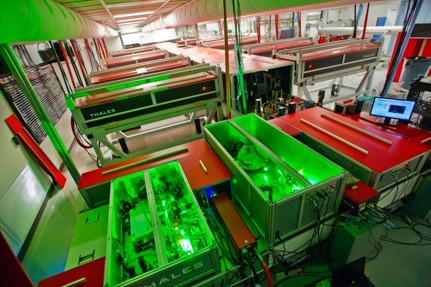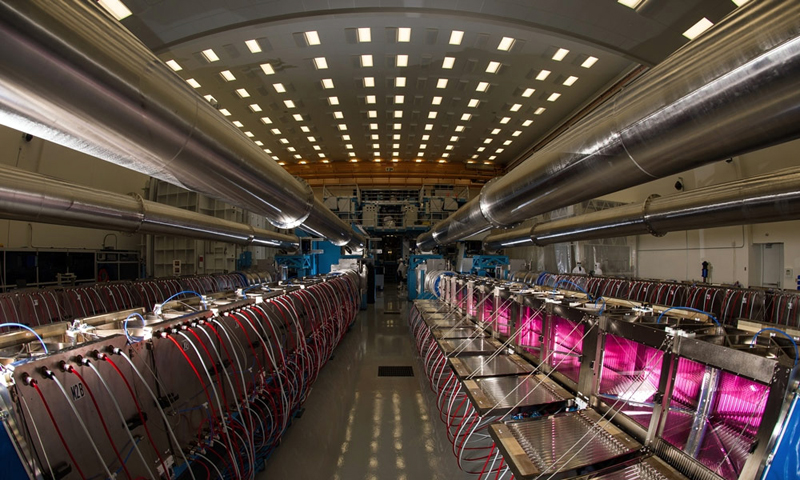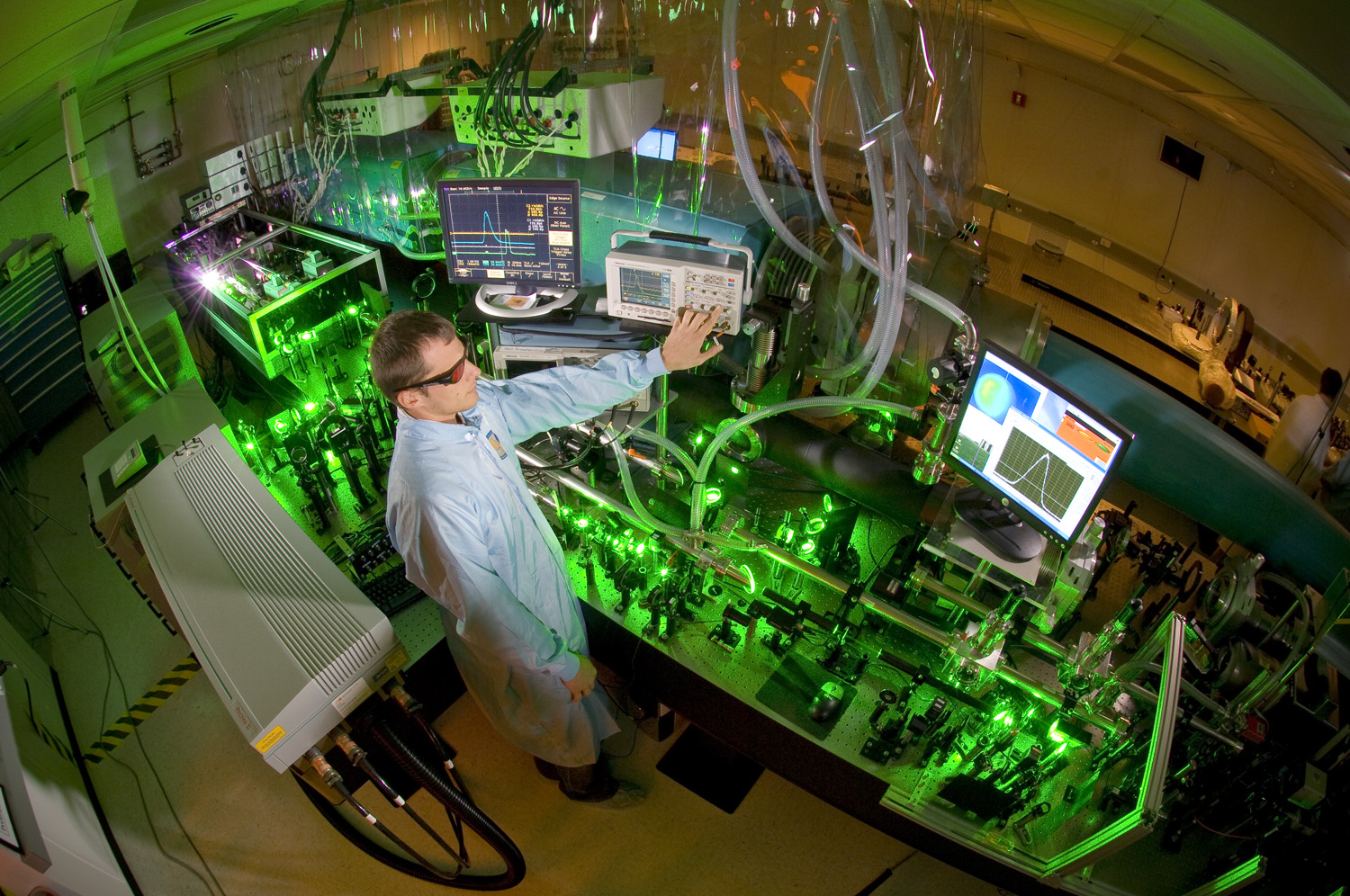Resources
Resources
LaserNetUS established as new national high intensity laser network
Nov 1, 2018. News
Source: https://optics.org/news/9/10/54
A new US-wide national research network called LaserNetUS involves nine institutions across the country. The collaboration includes the Department of Energy’s Lawrence Berkeley National Laboratory, University of Texas at Austin, Ohio State, Colorado State, Michigan, Nebraska-Lincoln, SLAC National Laboratory, Lawrence Berkeley National Laboratory, and Lawrence Livermore National Laboratory.
Together these facilities will provide US scientists with improved access to high-intensity, ultrafast lasers. The project is funded by the US Department of Energy’s Office of Fusion Energy Sciences within the Office of Science and will receive $6.8 million over the next two years.
Power brokers
Berkeley Lab LaserNetUS includes the BELLA petawatt laser at Berkeley Lab’s Accelerator Technology & Applied Physics Division.
“High-intensity and ultrafast lasers have come to be essential tools in many of the sciences, and in engineering applications as well,” said James Symons, Berkeley Lab’s associate laboratory director for its Physical Sciences Area.

They have a broad range of uses in basic research, manufacturing, and medicine. For example, they can be used to recreate some of the most extreme conditions in the universe, such as those found in supernova explosions and near black holes.
They can generate high-energy particles for high-energy physics research (being explored at the BELLA Center) or intense X-ray pulses to probe matter as it evolves on ultrafast timescales. Also, lasers and laser-based systems can cut materials precisely, generate intense neutron bursts to evaluate aging aircraft components, and potentially deliver tightly focused radiation therapy to tumors, among other uses.
LLE, Rochester The University of Rochester’s Laboratory for Laser Energetics (LLE) is also one of the partners. Mike Campbell, director of the LLE, commented, “As the largest university-based laser facility in the world, the Omega Laser Facility at the LLE will bring unique energy, intensity, versatility, reliability and diagnostic capability to the LaserNetUS network.”

US leadership
SLAC The US Department of Energy’s SLAC National Accelerator Laboratory has also joined LaserNetUS, including the Matter in Extreme Conditions (MEC) laser facility at SLAC’s Linac Coherent Light Source (LCLS).
SLAC’s Matter in Extreme Conditions Instrument at the Linac Coherent Light Source will offer optical laser-only time to visiting scientists as a part of the LaserNetUS network. High intensity lasers at MEC coupled with the LCLS X-ray laser have been used to study extremely hot, dense matter found at the centers of stars and giant planets.

Gilliss Dyer, department head of MEC commented, “I expect this network to energize the high-power laser community in the US by leveraging some of the excellent existing facilities and motivating future investments.
“There are many talented scientists in this field who need better access to laser facilities to try their ideas. For SLAC, this is a great opportunity to broaden the MEC user base and drive even more great science.”
The petawatt-class lasers of the LaserNetUS partners use a technology known as “chirped pulse amplification,” which was pioneered by two of the winners of this year's Nobel Prize in physics; these lasers fire off bursts of light shorter than a tenth of a trillionth of a second.
University of Texas at Austin
UT at Austin will also be a key player in LaserNetUS. UT Austin is home to one of the most powerful lasers in the country, the Texas Petawatt Laser. The university will receive $1.2 million to fund its part of the network.

"UT Austin has become one of the international leaders in research with ultra-intense lasers, having operated one of the highest-power lasers in the world for the past 10 years," said Todd Ditmire, director of UT Austin’s Center for High Energy Density Science, which houses the Texas Petawatt Laser. "We can play a major role in the new LaserNetUS network with our established record of leadership in this exciting field of science."
International 'laser race'
The US was the dominant innovator and user of high-intensity laser technology in the 1990s, but now Europe and Asia have taken the lead, according to a recent report from the National Academies of Sciences, Engineering, and Medicine titled "Opportunities in Intense Ultrafast Lasers: Reaching for the Brightest Light."
Currently, 80 to 90 percent of the world's high-intensity ultrafast laser systems are overseas, and all of the highest-power research lasers that are currently in construction or have already been built are also overseas.
The report's authors recommended establishing a national network of laser facilities to emulate successful efforts in Europe. LaserNetUS was established for exactly that purpose.
LaserNetUS will hold a nationwide call for proposals for access to the network's facilities. The proposals will be peer reviewed by an independent proposal review panel. This call will allow any researcher in the U.S. to get time on one of the high intensity lasers at the LaserNetUS hosts
Wim Leemans, director of Berkeley Lab’s Accelerator Technology and Applied Physics Division and of the BELLA Center, said, “This has the potential for huge leverage of existing and future investments in laser facilities. Researchers across the U.S. have great ideas for discovery science that depend on lasers, and LaserNetUS can connect them with beamtime at sources that meet their needs.”
The group held its first annual meeting at the University of Nebraska, home of the Extreme Light Lab, in August 2018, and will hold a nationwide call for user proposals to access the network's facilities. The proposals will be peer-reviewed by an independent panel. This process will allow any researcher in the U.S. to request time on one of the high-intensity lasers at the LaserNetUS host institutions.
More From News